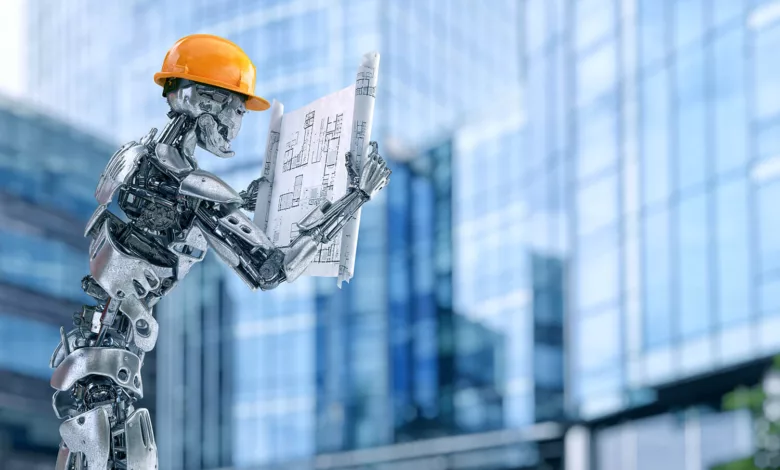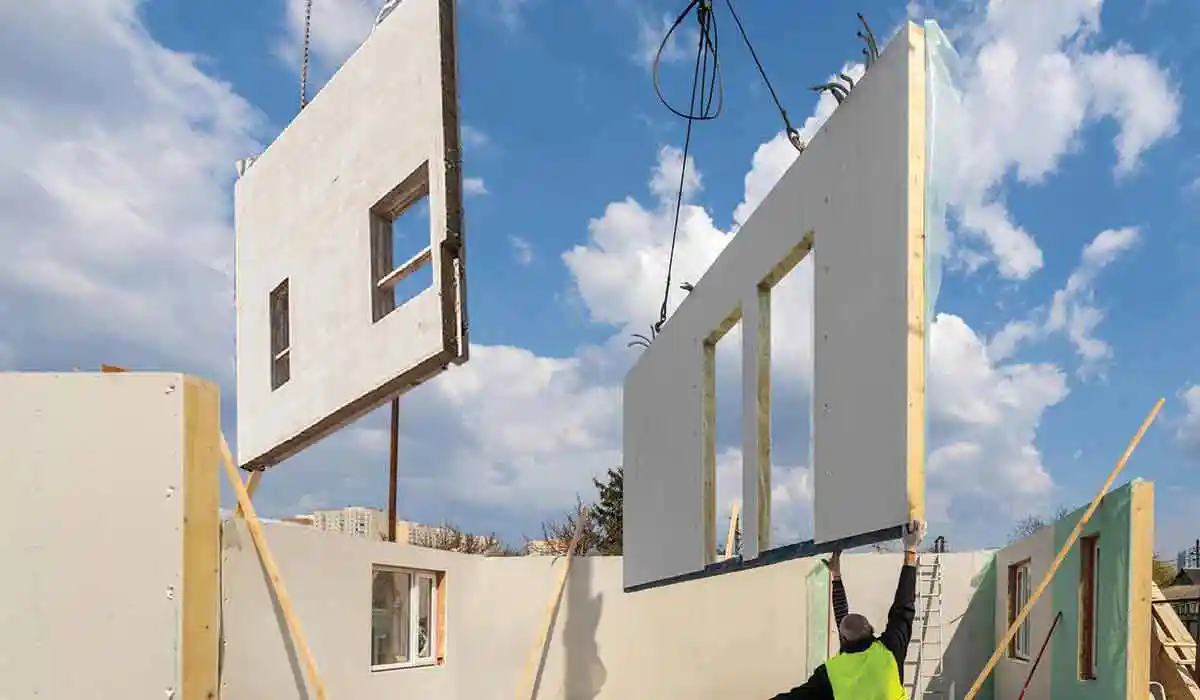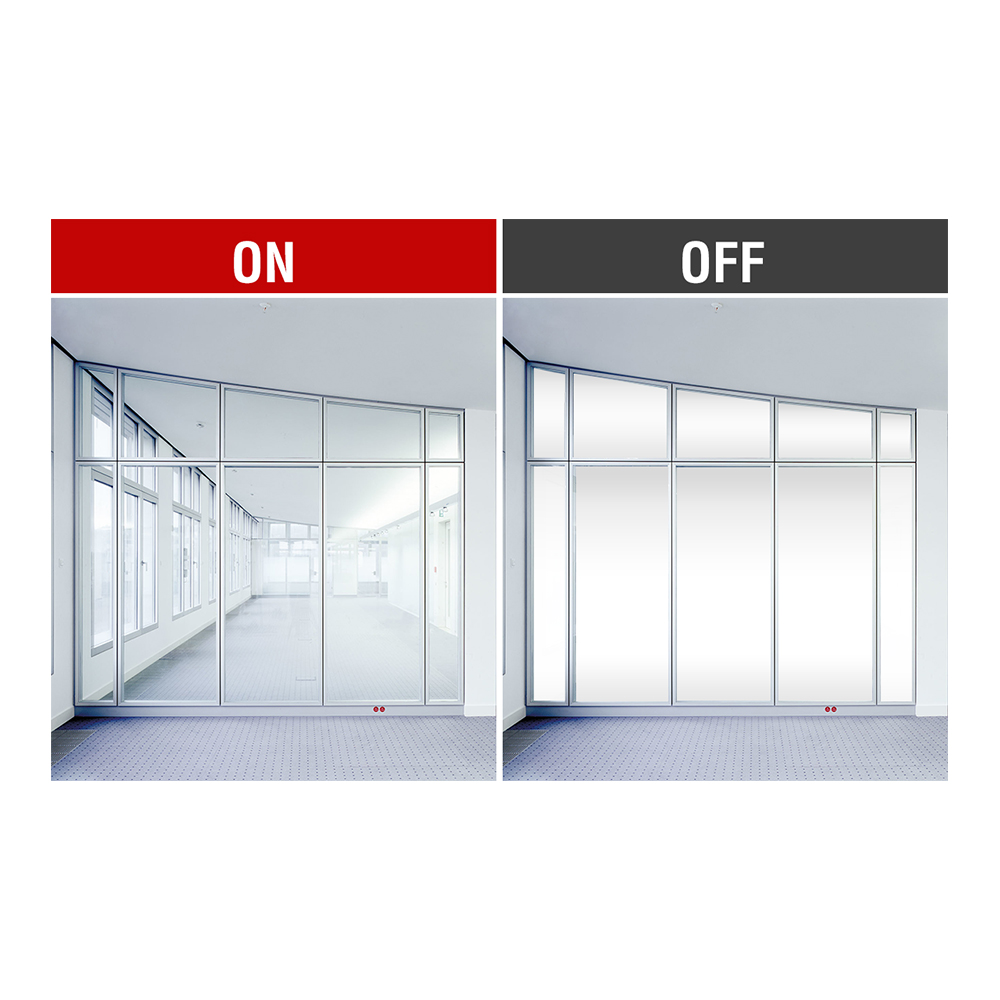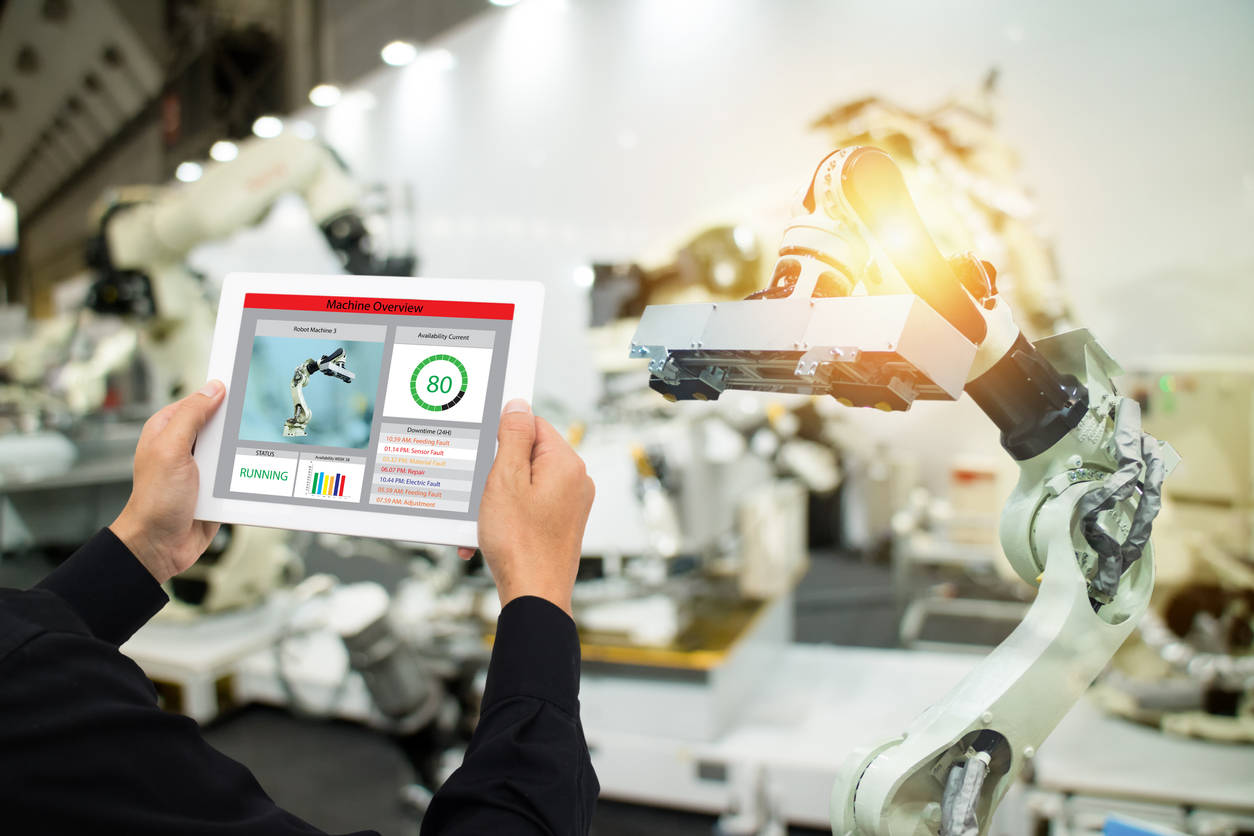
- 3D printing: A process where a computer-controlled machine builds a three-dimensional object by layering materials on top of each other.
- Building Information Modeling (BIM): A digital representation of a building’s physical and functional characteristics, used for planning, designing, construction, and management.
- Prefabrication: The process of manufacturing building components in a factory or off-site and then assembling them on the construction site.
- Virtual and augmented reality: Technologies used to create digital simulations and enhance visualization in the design and construction process.
- Sustainable building materials: Materials that are environmentally friendly, recyclable, or made from renewable resources, such as bamboo, reclaimed wood, and recycled plastic.
- Robotics and automation: The use of robots and automated systems to improve construction efficiency and safety, such as automated bricklaying machines and drones for site inspections.
Here are 15 of the best new-age construction technology currently being used in India in 2023:
- 3D Printing:
3D printing is an innovative technology used in the construction industry to create complex building components using computer-controlled machines that print materials layer by layer to create a three-dimensional object. The process involves creating a digital model of the object or component, which is then sliced into many thin layers. The 3D printer then reads the design file and adds the layers one by one, often using materials such as concrete, plastics, or composites.
In the construction industry, 3D printing is being used to create building components such as walls, columns, and even entire houses, bridges, and other infrastructure. This technology has several advantages, including:
- Reduced Construction Time: 3D printing allows building components to be manufactured quickly, reducing construction time and labor costs.
- Improved Precision: 3D printing can produce highly precise components with fewer errors and less waste.
- Cost Savings: 3D printing can reduce the costs associated with traditional construction methods, such as formwork, scaffolding, and transportation.
- Design Flexibility: 3D printing allows for complex and intricate designs that would be difficult or impossible to achieve with traditional construction methods.
- Sustainability: 3D printing can reduce waste by using only the necessary amount of material to create a component, as well as using eco-friendly materials and reducing transportation emissions.
In India, 3D printing technology is being used to create affordable and sustainable housing solutions for low-income families, as well as to create large-scale infrastructure projects such as bridges and highways.
- Building Information Modeling (BIM):
Building Information Modeling (BIM) is a digital technology used in the construction industry to create a detailed and comprehensive digital representation of a building or infrastructure project. BIM technology uses 3D modeling, data analysis, and collaboration tools to create a virtual model of a building or structure, which includes all the physical and functional characteristics of the building.
The BIM model provides a single source of truth that can be accessed by all stakeholders involved in the construction project, including architects, engineers, contractors, and owners. This technology has several advantages, including:
- Improved Collaboration: BIM facilitates collaboration between all stakeholders involved in the construction project, reducing communication errors and increasing efficiency.
- Enhanced Visualization: BIM technology allows for 3D visualization of the building or structure, providing a clear picture of how it will look and function.
- Reduced Errors and Changes: BIM technology enables early identification of design issues and clashes, reducing the need for expensive changes and rework later in the construction process.
- Improved Sustainability: BIM technology enables analysis of a building’s environmental impact, allowing for optimization of energy use and material efficiency.
- Increased Safety: BIM technology enables safety analysis and hazard identification, reducing safety risks and accidents during construction and maintenance.
In India, BIM technology is being increasingly used in the construction industry to improve collaboration, efficiency, and sustainability in building and infrastructure projects. Several government organizations and private construction companies are adopting BIM technology to optimize construction processes, improve project outcomes, and reduce costs.
- Prefabrication:
The prefabrication process involves designing and engineering the building components using Building Information Modeling (BIM) technology, followed by the manufacturing of the components in a factory setting. The components are then transported to the construction site, where they are assembled into the final building or structure.
Prefabrication has several advantages over traditional construction methods, including:
- Reduced Construction Time: Prefabrication allows for rapid construction on site, reducing construction time and labor costs.
- Improved Quality Control: Prefabrication enables consistent quality control in a controlled factory setting, reducing errors and defects.
- Reduced Waste: Prefabrication results in less waste and debris on site, reducing environmental impact and disposal costs.
- Improved Safety: Prefabrication reduces safety risks on site by minimizing the time spent on site and reducing the need for heavy machinery.
- Cost Savings: Prefabrication can reduce construction costs by optimizing the use of materials and reducing labor costs.

In India, prefabrication technology is being increasingly used in the construction industry to build affordable and sustainable housing solutions, as well as commercial and industrial buildings. Several government organizations and private construction companies are adopting prefabrication technology to optimize construction processes, reduce construction time and costs, and improve the quality of buildings and infrastructure.
- Green Building Materials:
Green building materials are materials that are environmentally responsible and resource-efficient throughout their lifecycle, from extraction and manufacturing to installation, use, and disposal. Green building materials are designed to reduce the environmental impact of building construction and operations while enhancing occupant health and wellbeing.
There are several types of green building materials available, including:
- Recycled Materials: These materials are made from recycled products such as glass, steel, and plastic.
- Renewable Materials: These materials are made from renewable resources such as bamboo, straw, and cork.
- Low-VOC Materials: These materials are low in volatile organic compounds (VOCs), which are harmful chemicals that can negatively impact indoor air quality.
- Energy-Efficient Materials: These materials are designed to reduce energy consumption, such as insulation materials, windows, and lighting fixtures.
- Sustainable Materials: These materials are environmentally responsible and sustainable throughout their lifecycle, including materials that are sourced locally or that are biodegradable or compostable.
In India, there is increasing demand for green building materials as builders and developers seek to build more sustainable and environmentally responsible buildings. Several green building material manufacturers and suppliers are emerging in India, providing eco-friendly solutions for construction projects. The Indian Green Building Council (IGBC) has also developed several rating systems for green buildings, encouraging the use of green building materials and sustainable construction practices.
- Smart Glass:
Smart glass, also known as switchable glass or electrochromic glass, is a type of glass that can change its properties based on external factors such as light or electricity. Smart glass can switch from transparent to opaque, or change its tint, in response to a user’s needs or preferences.
Smart glass technology works by using a layer of liquid crystals or electrochromic materials that respond to an electric current or other stimuli. When a voltage is applied, the liquid crystals or electrochromic materials align themselves, changing the opacity or color of the glass.

Smart glass has several advantages, including:
- Privacy and Security: Smart glass can provide privacy and security by switching to an opaque state to prevent outsiders from seeing inside a building or room.
- Energy Efficiency: Smart glass can help reduce energy consumption by blocking sunlight and reducing heat gain during the summer months, and allowing more natural light during the winter months.
- Comfort: Smart glass can enhance the comfort of occupants by providing glare control and reducing heat gain, which can improve indoor air quality and occupant productivity.
- Aesthetic Appeal: Smart glass can be customized to suit a variety of design needs and preferences, allowing for greater aesthetic flexibility.
- Low Maintenance: Smart glass is easy to maintain and clean, requiring minimal upkeep and reducing long-term maintenance costs.
In India, smart glass technology is becoming increasingly popular in commercial and residential buildings, as it offers a range of benefits for building owners and occupants. Smart glass is being used in windows, doors, skylights, and partitions, and can be integrated with building automation systems to enhance energy efficiency and user comfort.
- Virtual and Augmented Reality:
Virtual Reality (VR) and Augmented Reality (AR) are two types of immersive technologies that are increasingly being used in the construction industry.
Virtual Reality (VR) is a computer-generated simulation of a three-dimensional environment, which can be experienced through a VR headset. VR technology allows users to interact with a virtual environment, providing a realistic simulation of a building or structure before it is constructed. VR technology is particularly useful for building design and visualization, allowing architects and engineers to test different design options, identify potential problems, and make changes before construction begins.
Augmented Reality (AR) is a technology that overlays computer-generated content onto the real-world environment, typically through a smartphone or tablet. AR technology allows users to see a digital representation of a building or structure overlaid onto the physical environment, providing a better understanding of how the design will look and function in real life. AR technology is particularly useful for construction site management, allowing project managers to visualize construction progress and identify potential issues.
In India, VR and AR technology are increasingly being used in the construction industry, particularly for building design and visualization, as well as construction site management. Several construction companies in India are using VR and AR technology to improve the construction process, reduce errors, and enhance communication between project stakeholders. Additionally, VR and AR technology can help reduce construction waste and costs, as changes can be made before construction begins, reducing the need for expensive modifications during construction.
- Drones:
Drones, also known as unmanned aerial vehicles (UAVs), are becoming increasingly popular in the construction industry for a variety of applications.
One of the main uses of drones in construction is for site surveying and mapping. Drones equipped with high-resolution cameras and sensors can quickly and accurately capture data on a construction site, providing detailed 3D models and maps that can be used for planning, design, and construction.
Drones can also be used for monitoring construction progress and inspecting buildings and structures. Drones can provide a bird’s-eye view of a construction site, allowing project managers to monitor progress and identify potential issues. Drones can also be used to inspect buildings and structures, particularly in hard-to-reach areas, such as roofs and facades.

Drones can also improve safety on construction sites. By using drones to inspect and monitor construction sites, workers can avoid potentially dangerous situations, such as climbing scaffolding or working at heights.
In India, the use of drones in construction is still in its early stages, but there is growing interest in the technology. The Indian government has recently issued guidelines for the use of drones in construction, allowing construction companies to use drones for site surveying, monitoring construction progress, and inspecting buildings and structures. As the technology becomes more accessible and affordable, it is expected that the use of drones in construction in India will continue to grow.
- Robotics:
Robotics technology involves the use of robots to perform various tasks in the construction industry. Robotics can be used for a range of applications, from building and assembling structures to demolition and site cleanup.
One of the main uses of robotics in construction is for repetitive or dangerous tasks, such as bricklaying or concrete pouring. Robots can perform these tasks more quickly and accurately than human workers, and can work around the clock without needing breaks.
Robots can also be used for 3D printing and prefabrication, allowing for the rapid construction of buildings and structures. 3D printing robots can create complex shapes and structures with precision, and prefabrication robots can assemble components off-site, reducing construction time and costs.
In addition to construction tasks, robotics can also improve safety on construction sites. Robots can be used for site inspections and monitoring, reducing the need for workers to enter hazardous areas.
In India, robotics technology is still in its early stages in the construction industry, but there is growing interest in the technology. Several Indian startups and companies are developing robots for construction applications, such as bricklaying and site inspection. As the technology becomes more advanced and affordable, it is expected that the use of robotics in construction in India will continue to grow.
- Solar Energy: .
Solar energy is a renewable energy source that is increasingly being used in the construction industry in India. Solar energy is generated from photovoltaic (PV) cells, which convert sunlight into electricity. Solar panels can be installed on buildings or in open areas to generate electricity for use on-site or to be fed back into the grid.
One of the main uses of solar energy in construction is for on-site power generation. Solar panels can be installed on rooftops or on open land to generate electricity for use on-site, reducing the need for grid electricity and lowering energy costs. Solar energy can also be used to power equipment and machinery on construction sites, reducing the use of fossil fuels and lowering carbon emissions.
In addition to on-site power generation, solar energy can also be used for building design and construction. Building-integrated photovoltaics (BIPV) are solar panels that are integrated into building materials, such as windows and roofing, providing both energy generation and building functionality. BIPV can be used to reduce energy costs, improve building performance, and enhance the aesthetics of buildings.
In India, the use of solar energy in construction is growing rapidly, driven by government incentives and policies to promote renewable energy. Several Indian cities have set targets for solar power generation, and the government has launched several initiatives to encourage the use of solar energy in buildings and infrastructure projects. As the cost of solar technology continues to decrease, it is expected that the use of solar energy in construction in India will continue to grow.
- Advanced Lighting Systems:
Advanced lighting systems are becoming increasingly popular in the construction industry in India. These systems use energy-efficient lighting technologies and advanced control systems to provide better lighting quality, lower energy costs, and improved occupant comfort.
One of the main types of advanced lighting systems is LED (light-emitting diode) lighting. LED lighting is more energy-efficient than traditional lighting technologies, such as incandescent bulbs or fluorescent lamps, and has a longer lifespan. LED lighting can be used for interior and exterior lighting, and can be controlled by advanced lighting control systems to adjust light levels and color temperature based on occupancy and daylight levels.
Another type of advanced lighting system is daylight harvesting. Daylight harvesting systems use sensors to detect the amount of natural light entering a space and adjust artificial lighting levels accordingly, reducing energy consumption and improving occupant comfort.
Smart lighting systems are also becoming more common in the construction industry. Smart lighting systems use sensors, automation, and advanced controls to adjust lighting levels based on occupancy, time of day, and other factors. Smart lighting systems can also be integrated with building automation systems to provide a more comprehensive approach to building energy management.
In India, the adoption of advanced lighting systems is growing, driven by government incentives and policies to promote energy efficiency in buildings. Several Indian cities have launched initiatives to encourage the use of energy-efficient lighting technologies in public buildings and infrastructure projects, and the government has launched several programs to promote energy efficiency in the building sector. As the cost of advanced lighting technologies continues to decrease, it is expected that the use of these systems in construction in India will continue to grow.
- Advanced HVAC Systems:
Advanced HVAC (heating, ventilation, and air conditioning) systems are becoming increasingly important in the construction industry in India. These systems use advanced technologies and controls to provide better indoor air quality, greater energy efficiency, and improved occupant comfort.
One of the main types of advanced HVAC systems is variable refrigerant flow (VRF) systems. VRF systems use a single outdoor unit to supply refrigerant to multiple indoor units, allowing for individual temperature control in different zones of a building. VRF systems are more energy-efficient than traditional HVAC systems, and can provide better comfort and control for occupants.
Another type of advanced HVAC system is geothermal heating and cooling. Geothermal HVAC systems use the earth’s natural energy to heat and cool buildings, by using pipes buried in the ground to exchange heat with the earth. Geothermal systems are highly energy-efficient and can significantly reduce energy costs over time.
Smart HVAC systems are also becoming more common in the construction industry. Smart HVAC systems use sensors, automation, and advanced controls to adjust HVAC settings based on occupancy, time of day, and other factors. Smart HVAC systems can also be integrated with building automation systems to provide a more comprehensive approach to building energy management.
In India, the adoption of advanced HVAC systems is growing, driven by government incentives and policies to promote energy efficiency in buildings. Several Indian cities have launched initiatives to encourage the use of energy-efficient HVAC technologies in public buildings and infrastructure projects, and the government has launched several programs to promote energy efficiency in the building sector. As the cost of advanced HVAC technologies continues to decrease, it is expected that the use of these systems in construction in India will continue to grow.
- Geothermal Systems:
Geothermal systems, also known as ground source heat pumps (GSHPs), are becoming increasingly popular in the construction industry in India. Geothermal systems use the earth’s natural energy to heat and cool buildings, by using pipes buried in the ground to exchange heat with the earth.
Geothermal systems work by circulating a fluid through a loop of pipes buried in the ground, which absorbs heat from the earth in winter and releases heat to the earth in summer. The heat is then transferred to a heat pump, which uses it to heat or cool the building. Geothermal systems are highly energy-efficient and can significantly reduce energy costs over time.
One of the main advantages of geothermal systems is that they can provide both heating and cooling, making them a versatile solution for buildings in all climates. They are also highly durable and have a long lifespan, with minimal maintenance required.
In India, the adoption of geothermal systems is growing, driven by government incentives and policies to promote energy efficiency in buildings. Several Indian cities have launched initiatives to encourage the use of geothermal technologies in public buildings and infrastructure projects, and the government has launched several programs to promote energy efficiency in the building sector. As the cost of geothermal technologies continues to decrease, it is expected that the use of these systems in construction in India will continue to grow.
- Nanotechnology:
Nanotechnology is an emerging field in the construction industry that involves the use of materials and systems at the nanoscale (1-100 nanometers) to enhance properties such as strength, durability, and energy efficiency.
One application of nanotechnology in construction is in the development of advanced building materials, such as concrete, coatings, and insulation. Nanoparticles can be added to these materials to improve their properties, such as strength, fire resistance, and thermal insulation.
Another application of nanotechnology is in the development of sensors and monitoring systems for buildings. Nanosensors can be used to detect changes in temperature, humidity, and other environmental factors, and can provide real-time feedback to building managers to optimize building performance and reduce energy consumption.
In India, the adoption of nanotechnology in construction is still in its early stages, but there is growing interest in the potential applications of nanotechnology in the building sector. Several Indian universities and research institutions are conducting research on the use of nanotechnology in construction, and the government has launched several initiatives to promote research and development in this area.
As the cost of nanotechnology continues to decrease and new applications are discovered, it is expected that the use of nanotechnology in construction in India will continue to grow in the coming years.
- Self-healing Concrete:
Self-healing concrete is a new-age construction technology that has been developed to increase the durability and longevity of concrete structures. Concrete is the most commonly used construction material, but it is prone to cracks and damage over time, which can lead to structural problems and a shorter lifespan.
Self-healing concrete uses a combination of materials and technologies to repair cracks and damage automatically. One approach is to embed capsules containing healing agents, such as bacteria or polymers, into the concrete mixture. When cracks occur, the capsules rupture and release the healing agents, which react with the surrounding environment to form a new material that fills the crack.
Another approach is to use fibers or other materials that can reinforce the concrete and prevent cracks from forming in the first place. These materials can absorb stresses and strains that would otherwise cause cracks to develop.
In India, the adoption of self-healing concrete is still in its early stages, but there is growing interest in the potential applications of this technology in the building sector. Several Indian universities and research institutions are conducting research on self-healing concrete, and the government has launched initiatives to promote research and development in this area.
As the cost of self-healing concrete continues to decrease and new applications are discovered, it is expected that the use of this technology in construction in India will continue to grow in the coming years. Self-healing concrete has the potential to increase the durability and lifespan of concrete structures, reduce maintenance costs, and improve the sustainability of the building sector.
- Artificial Intelligence:
Artificial intelligence (AI) is a rapidly developing technology that has the potential to revolutionize the construction industry in India. AI involves the development of intelligent computer programs that can perform tasks that typically require human intelligence, such as visual perception, speech recognition, decision-making, and problem-solving.
One application of AI in construction is in the development of smart buildings and infrastructure. AI can be used to optimize building performance by analyzing data from sensors and monitoring systems and adjusting building systems such as lighting, heating, and ventilation in real-time to improve energy efficiency and occupant comfort.
AI can also be used to automate repetitive tasks and optimize construction processes. For example, AI can be used to analyze construction plans and schedules and identify potential delays or cost overruns. AI-powered robots can also be used to perform tasks such as bricklaying, painting, and welding, reducing the need for human labor and improving safety on construction sites.
In India, the adoption of AI in construction is still in its early stages, but there is growing interest in the potential applications of this technology in the building sector. Several Indian construction companies are exploring the use of AI in their operations, and the government has launched initiatives to promote research and development in this area.





